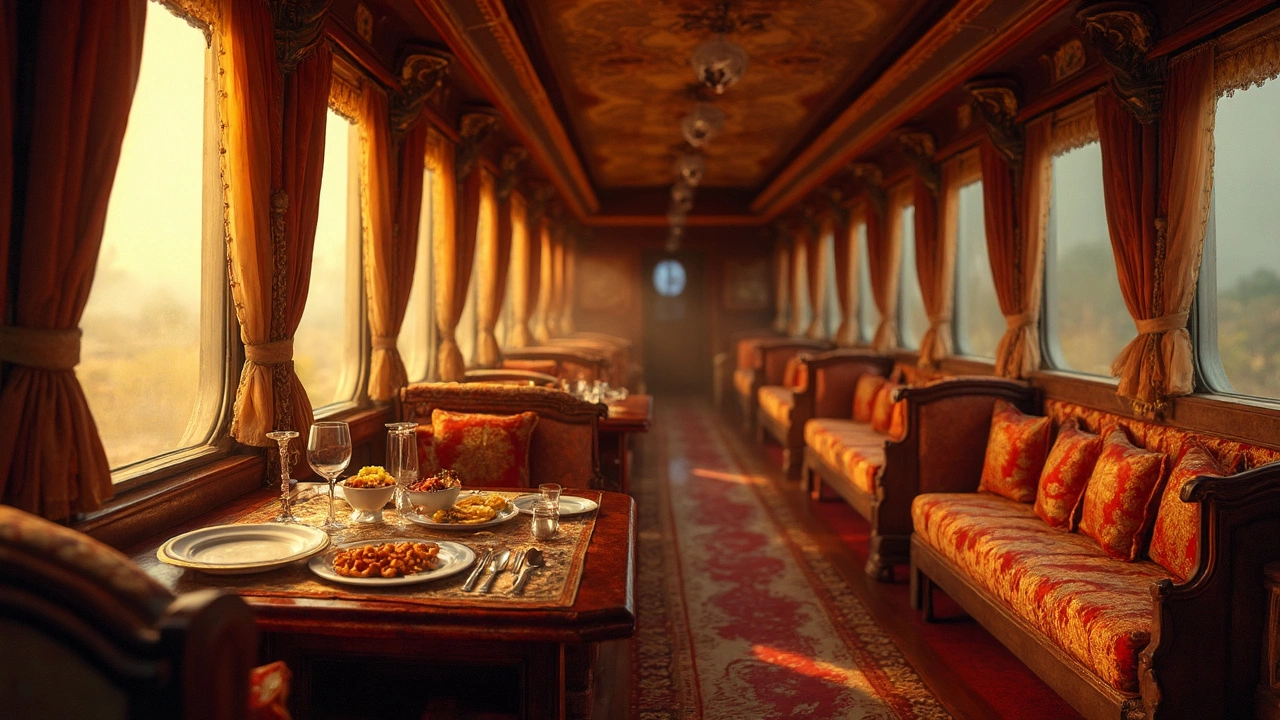What Happens to Train Toilets on Luxury Journeys?
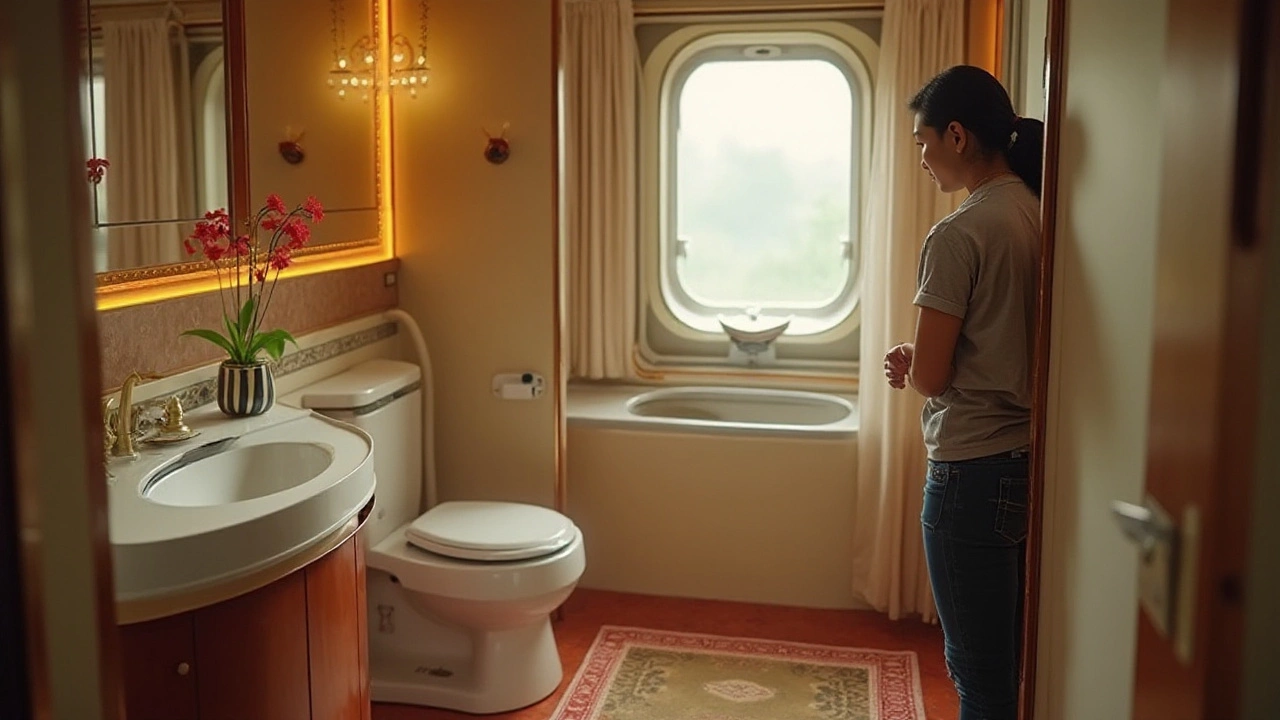
The inner workings of train toilets are often overlooked yet play a crucial role in ensuring a comfortable journey. It's fascinating to consider how these marvels of compact engineering manage waste efficiently while on the move. Train toilets have come a long way from their rudimentary origins, evolving into sophisticated systems that align with eco-friendly practices. In this article, we'll take a closer look at how these essential fixtures operate, especially on luxurious train journeys where every detail counts in creating a seamless travel experience.
- The Evolution of Train Toilets
- Technology Behind Train Waste Systems
- Environmental Impact and Sustainability
- Tips for a Comfortable Journey
The Evolution of Train Toilets
Train travel has always embodied a unique blend of utility and adventure, whisking passengers across expansive landscapes while they relax in comfort. Yet, among the various amenities that have undergone technological transformations, train toilets stand out for their remarkable journey from basic conveniences to essential comforts of modern-day travel. Initially, train toilets were little more than rudimentary holes, dropping waste directly onto the tracks below. Known as the ‘hopper toilet,’ this early system was an unhygienic solution ill-suited to busy travel routes or urban areas. This unsophisticated setup posed serious environmental concerns and eventually necessitated an overhaul.
The turning point in toilet technology arrived with the advent of the ‘chemical toilet.’ This innovation, first introduced in the early 20th century, offered a marginal improvement through the use of chemicals to disinfect and deodorize waste. While a step forward, these toilets still lacked efficiency and often resulted in odor issues. Moving forward into the mid-20th century, as train travel gained momentum, there was a pressing need for a more advanced, sanitary option. This led to the introduction of the ‘vacuum toilet’ system, a significant leap in technology that borrowed its mechanism from the burgeoning aviation industry.
"Vacuum toilets revolutionized the landscape of train travel by utilizing a pressurized system to efficiently handle waste," said Dr. Alison Reynolds, a transport technology historian.
Fast forward to the modern era where luxury train travel has elevated the toilet experience even further, providing passengers with a level of comfort that rivals high-end hotels. On these opulent journeys, train toilets are designed not just for functionality but a seamless blend of style and eco-friendliness. Porcelain bowls, touch-free operations, and advanced waste compaction systems present a genuine upgrade that keeps up with the train's lavish services. In line with growing environmental consciousness, many train lines have adopted green technologies, focusing on efficient water use and responsible waste systems. This commitment to eco-friendliness is both a nod to sustainability and a testament to the industry’s continuous innovation.
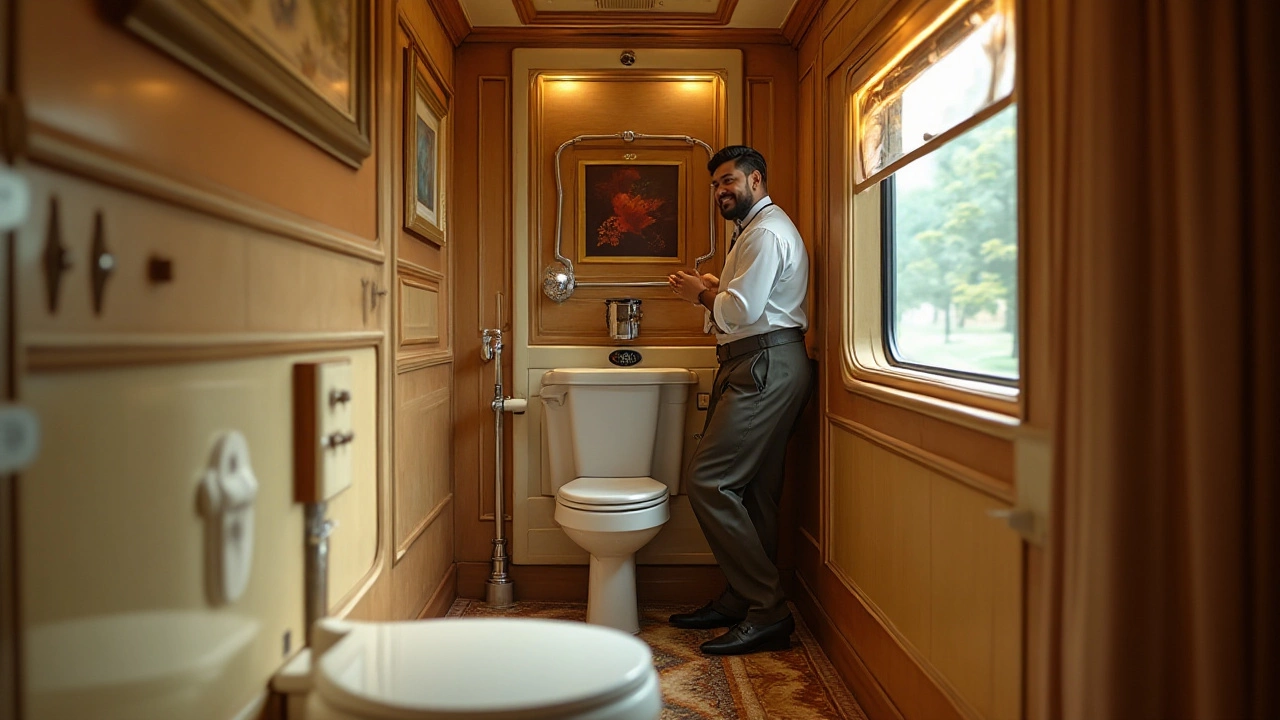
Technology Behind Train Waste Systems
The technology driving train toilets is nothing short of ingenious, reflecting decades of innovation aimed at ensuring passenger comfort while maintaining environmental standards. Central to modern systems is the vacuum toilet technology, which uses a minimal amount of water per flush. This system creates a strong suction force, efficiently removing waste while conserving precious resources—crucial factors given the limited water supply on trains. Vacuum systems also reduce the risk of blockages, a significant improvement from earlier designs that relied heavily on gravity and manual mechanics.
Beyond vacuum systems, there's the importance of materials and design. Train toilets must withstand the rigors of motion and vibration while providing stability. Cisterns and pipes use materials like stainless steel and fiberglass to resist corrosion and damage over time. The design also contemplates space efficiency, which is why these systems are usually vertical, with components stacked conveniently to conserve cabin space.
"The evolution of train waste management systems over the years has been both impressive and necessary, balancing functionality with the demands of modern environmental standards." - Rail Engineering Journal
Increasingly, luxury trains adopt eco-friendly waste treatment systems that treat and filter waste before expelling it, minimizing environmental impact. Advanced systems onboard may include bioreactors that harness bacteria to break down waste, transforming it into byproducts safe for release or disposal at designated facilities. This represents a shift away from merely storing waste in tanks, which require regular, costly emptying at service stops.
Information flow is also crucial in ensuring systems operate optimally. Sensors integrated within newer toilet systems inform train staff of pipe conditions and tank levels, preventing overflows and unsanitary conditions. These sensor systems provide real-time data, helping maintenance teams perform timely interventions and ensuring a seamless travel experience. In terms of energy efficiency, trains have been adopting solar panels and regenerative braking energy to power these systems, aligning with the broader shift to sustainable technologies.
For those curious about advancements down the track, consider innovations like waterless systems that use blue cleaning fluids to neutralize bacteria and odor without any water. These developments speak to a drive toward sustainability in all aspects of train design. When choosing your next luxury train journey, these technologies ensure a more comfortable and eco-minded experience.
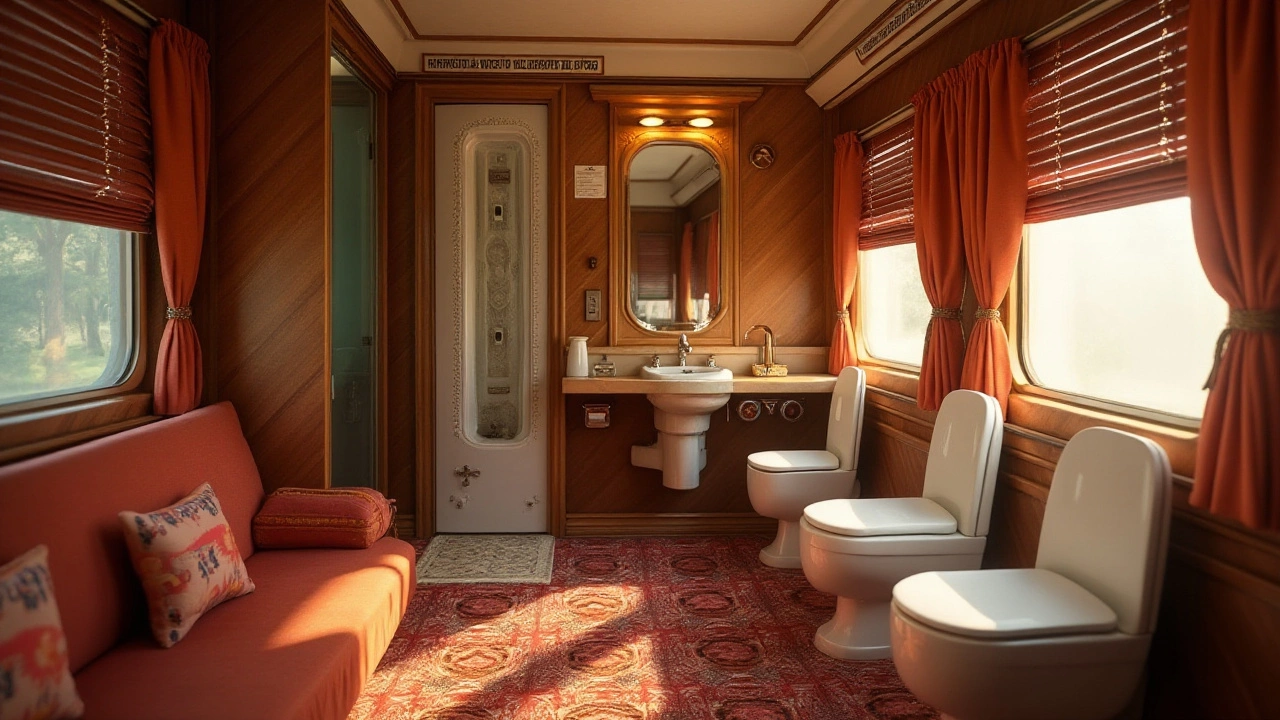
Environmental Impact and Sustainability
Luxury train journeys not only offer an unparalleled travel experience but are also increasingly focusing on minimizing their environmental footprint. Modern waste systems in train toilets have evolved significantly to address sustainability concerns. Historically, waste used to be expelled directly onto tracks, raising environmental and safety issues. Today, vacuum toilets and advanced holding tank systems prevent such problems. These systems use minimal water, reducing the amount of waste generated. This efficient method not only conserves water, a precious resource, but also decreases the burden on treatment facilities at endpoints.
Eco-efficiency in train systems gets further amplified with the use of bio-digesters and composting toilets in some newer models. These technologies break down waste using microbial action, transforming it into harmless byproducts. It's a natural process that reflects the growing trend of sustainable travel. Additionally, the integration of solar panels on carriages to power some of these systems is another step towards greener journeys. However, not all trains have embraced such technologies on a full scale. Regulations and costs can be limiting factors, as highlighted in a report by the International Railway Journal.
"Adopting green technologies in train systems requires a delicate balance between cost, practicality, and ecological benefits," writes sustainable transport expert Michael Harrison.
The impact of these advancements is clear in the reduced carbon footprints of luxury train travels. Recycling onboard materials like glass and metals plays a role in crafting a journey that's not only luxurious but also environmentally conscious. The commitment from railways to reduce greenhouse emissions aligns with global sustainability targets. Moreover, some luxury trains are adopting biofuels over traditional diesel engines, ensuring a cleaner energy source. This shift has been supported by governments and environmental bodies who recognize the potential of eco-friendly train transport in cutting down overall emissions.
Eco-conscious passengers are also given roles to play in this sustainable travel approach. Onboard practices such as recycling, reducing energy consumption by switching off lights in unoccupied compartments, and opting for services that generate less waste are encouraged. Passengers can contribute further by supporting trains that actively pursue eco-friendly policies. As more travelers show interest in eco-friendly travel, luxury train operators are increasingly motivated to consider their environmental impact. This dual responsibility not only enhances guest experiences but also positions train journeys as a viable alternative to flying, reducing dependence on less sustainable travel options.
The intersection of technology, sustainability, and luxury defines the future of train travel. By employing cutting-edge waste management technologies and embracing renewable energy sources, luxury train journeys can continue to thrive without compromising the planet. It's a promising trend that reflects broader societal shifts towards sustainability. As global railways strive to achieve higher environmental standards, the role of train waste systems in this mission is critical, bridging the gap between luxury and responsible travel.
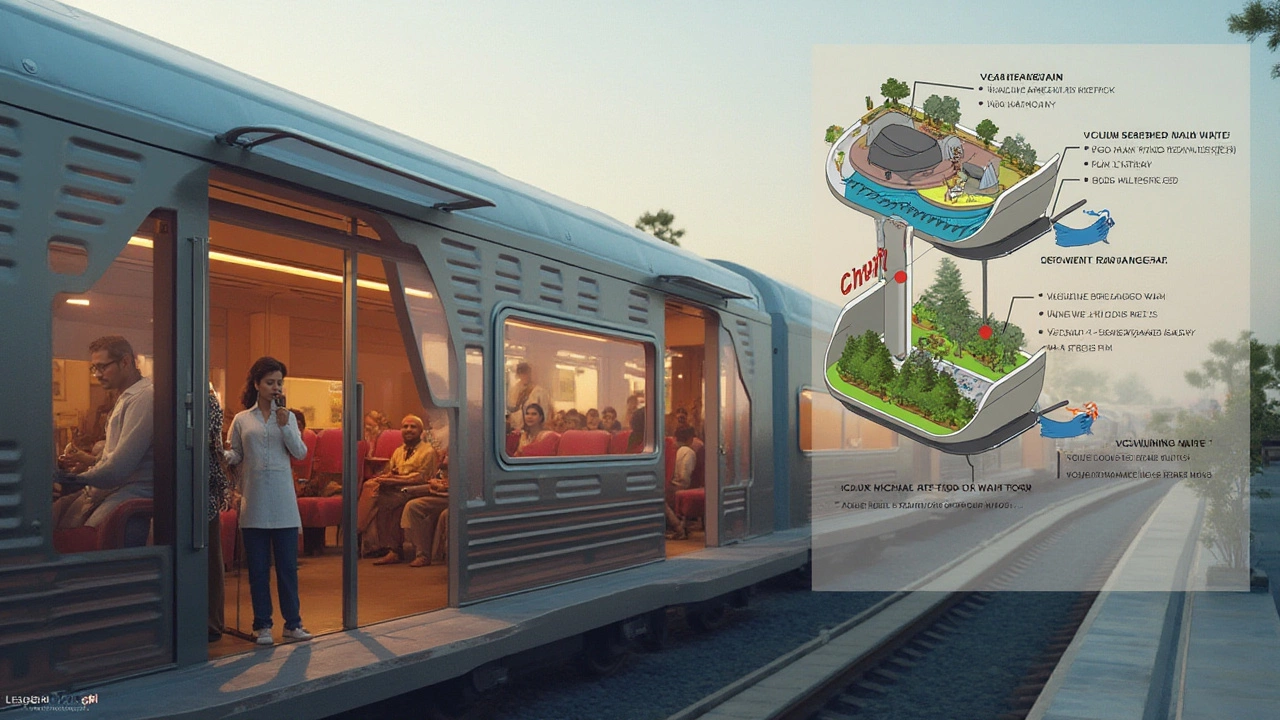
Tips for a Comfortable Journey
Embarking on a luxury train journey is a unique experience, where every detail matters to make your travel comfortable and memorable. Understanding the operation of train toilets and utilizing them effectively can significantly enhance your comfort. To ensure a seamless experience, being aware of personal hygiene practices and functional tips about using these facilities is crucial. Consider the materials you bring along; a small travel-sized antibacterial hand gel and wipes can be beneficial. Not only do they offer peace of mind, but they are reminders that cleanliness is essential when sharing confined spaces with fellow travelers. Always dispose of used wipes or tissues correctly following the guidelines provided onboard. Trains usually have well-designed signs indicating proper disposal methods.
Another integral part of a comfortable journey is familiarizing yourself with the waste management systems. Modern train systems often employ vacuum technology, making them efficient and conserving water. Knowing this can help you use the facilities without worry. The convenience these systems provide ensures minimal water usage, which is not only sustainable but also practical given the operational need to maintain balance when the train is moving. This technological marvel of managing waste systems seamlessly allows you to focus on the scenic landscapes outside your window rather than basic necessities. "It's quite fascinating how train toilets manage to blend comfort and environmental efficiency," a respected traveler once exclaimed, capturing the essence of what keeps luxury train journeys alluring.
Before you step onboard, take a moment to consider your dining habits on the train. An informed approach to meals can reduce unnecessary trips to the facilities. Opt for light meals that are easy to digest, although resisting indulgence can be tough with gourmet dining services available on luxury trains. Ensuring hydration is crucial, but balancing this with timely toilet visits can make your journey more pleasing. The toilets are well-equipped to handle the usual demands, but during peak times, such as early morning or late evening, planning ahead can save you from waiting in line. Comfortably packing your essentials and being mindful of the environment's rhythms contributes as much to the journey as the ride itself.
Enjoying the journey also involves engaging with the amenities provided and knowing when to ask for assistance if needed. Staff members are often trained to offer guidance, ensuring that every need is addressed swiftly. So, don't hesitate to inquire; having clarity can make your transit relaxing and efficient. Ultimately, each car is equipped to support eco-friendly travel, combining a commitment to a reduced environmental footprint without skimping on luxury. By respecting the operations of eco-friendly travel systems, passengers partake in a shared responsibility to protect the natural wonders that make each route special.
